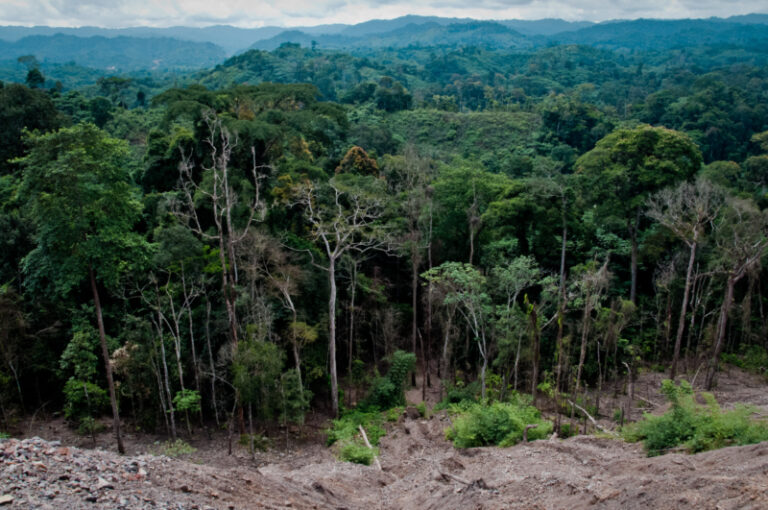
Deforestation, the large-scale removal of forests, is one of the leading causes of climate change. Forests act as carbon sinks, absorbing significant amounts of carbon dioxide (CO₂) from the atmosphere. When trees are cut down, the stored carbon is released, increasing the concentration of greenhouse gases and exacerbating global warming. As this issue continues to grow, understanding the causes, consequences, and potential solutions becomes crucial. For more insights, visit http://newztalkies.com.
What is Deforestation and How Does It Affect Climate Change?
Deforestation is the clearing of forested land for non-forest purposes, such as agriculture, urbanization, or industrial use. This practice has a direct impact on climate change because forests play a critical role in regulating the Earth’s carbon cycle.
Trees absorb CO₂ during photosynthesis and store it in their biomass. When forests are destroyed, this stored carbon is released back into the atmosphere, enhancing the greenhouse effect. The result is a warmer planet, disrupted ecosystems, and unpredictable weather patterns.
The Role of Forests in Carbon Sequestration
Forests are vital for carbon sequestration—the process of capturing and storing atmospheric CO₂. Here’s why forests are indispensable:
- Absorption of Carbon Dioxide
Trees absorb large amounts of CO₂ through photosynthesis, reducing the overall concentration of this greenhouse gas in the atmosphere. - Storage of Carbon
Forest biomass, including trunks, branches, leaves, and roots, acts as a carbon storage system. Soils under forests also store significant amounts of carbon. - Mitigation of Climate Change
By maintaining forests, we preserve their ability to act as “carbon sinks,” helping to slow the pace of global warming.
When deforestation occurs, this balance is disrupted, turning forests from carbon sinks into carbon sources. This accelerates climate change, making it even more challenging to meet global climate goals.
Major Causes of Deforestation
The drivers of deforestation vary globally but share common patterns:
1. Agricultural Expansion
Clearing forests to make way for crops and livestock farming is the leading cause of deforestation. For example, soy and cattle farming in the Amazon contribute to vast forest loss.
2. Logging
The demand for timber, paper, and wood products has led to unsustainable logging practices. Both legal and illegal logging contribute significantly to forest degradation.
3. Infrastructure Development
As urban areas expand, forests are cleared for roads, housing, and other infrastructure projects. This is particularly common in rapidly developing countries.
4. Mining Activities
Extractive industries, such as mining for minerals and fossil fuels, often lead to the destruction of forested land.
Read more : http://newztalkies.com
Effects of Deforestation on Climate Change
The impact of deforestation on climate change is profound and far-reaching:
1. Increased Greenhouse Gas Emissions
Deforestation accounts for approximately 11% of global CO₂ emissions. This is due to the release of carbon stored in trees and soil when forests are cleared.
2. Disruption of Weather Patterns
Forests influence rainfall patterns and local climates. Their removal can lead to altered precipitation levels, resulting in droughts or flooding.
3. Loss of Biodiversity
Forests are home to 80% of terrestrial species. Deforestation threatens biodiversity, pushing countless plant and animal species toward extinction.
4. Soil Degradation
Without tree cover, soils are exposed to erosion, losing their fertility and reducing their ability to store carbon.
Deforestation Hotspots Around the World
Certain regions face particularly high rates of deforestation:
1. The Amazon Rainforest
Known as the “lungs of the Earth,” the Amazon faces deforestation from cattle farming, soy cultivation, and logging. It is one of the largest contributors to global carbon emissions from deforestation.
2. Southeast Asia
Countries like Indonesia and Malaysia clear vast tracts of forest for palm oil plantations. These activities have destroyed habitats for species like orangutans and tigers.
3. Central Africa
In the Congo Basin, deforestation is driven by agriculture, logging, and charcoal production, threatening critical ecosystems.
Mitigation Strategies to Combat Deforestation
To reduce deforestation and its impact on climate change, several strategies must be implemented:
1. Promoting Sustainable Forestry
Sustainable forestry practices ensure that trees are harvested responsibly, allowing forests to regenerate and maintain their ecological balance.
2. Reforestation and Afforestation
Replanting trees in deforested areas (reforestation) and creating forests in previously non-forested areas (afforestation) can help restore carbon sinks.
3. Establishing Protected Areas
Designating national parks and reserves helps conserve forests and prevents illegal logging and land clearing.
4. Implementing Policy and Legislation
Governments must enforce strict laws against illegal logging and incentivize sustainable land-use practices.
5. Promoting Awareness and Education
Raising awareness about the importance of forests and educating communities about sustainable practices can drive change at the grassroots level.
The Future Outlook: Reversing Deforestation Trends
Reversing the trends of deforestation requires coordinated efforts at global, national, and local levels. Here’s what the future holds:
- International Cooperation
Initiatives like the Paris Agreement emphasize the need to protect forests to achieve climate goals. Countries must work together to fund and implement conservation efforts. - Innovative Technology
Using satellite monitoring and AI can help track deforestation in real time, allowing authorities to take swift action. - Community Involvement
Local communities play a vital role in forest conservation. Empowering them with resources and incentives ensures long-term sustainability.
Conclusion
Deforestation has a devastating impact on climate change, contributing to increased greenhouse gas emissions and disrupting ecological balance. However, the solutions are within reach. By implementing sustainable practices, reforestation projects, and global cooperation, we can protect forests and slow climate change. Safeguarding forests today ensures a healthier, more stable planet for future generations. To explore topics that matter, including environmental solutions, check out Abuelos Menú for insightful discussions.





